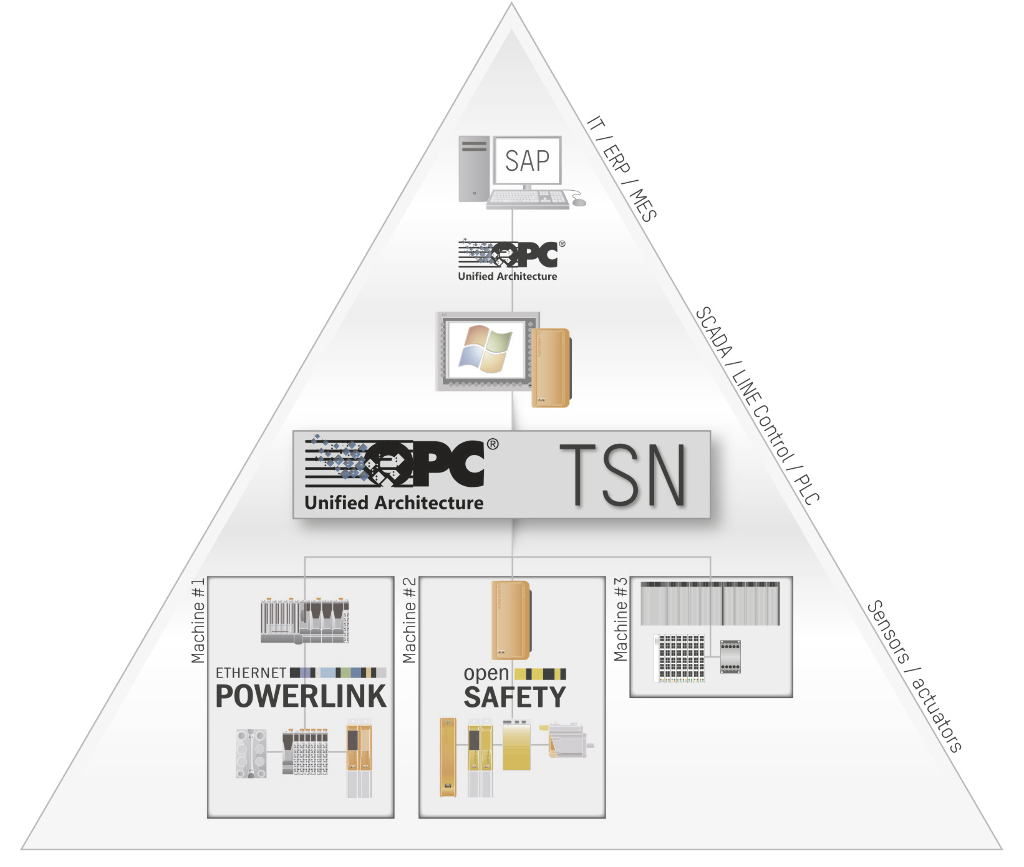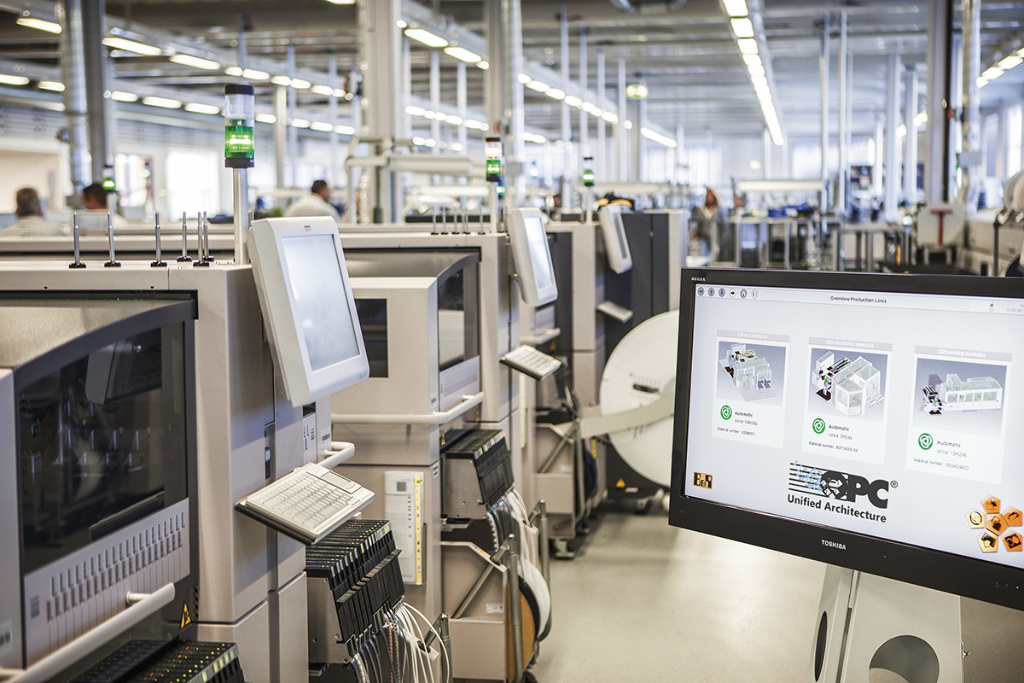
Integration of all communication from the ERP level to the field level is an essential requirement for today's most advanced production systems. To penetrate the barriers between IT and automation, equipment owners are increasingly turning to the open OPC UA standard. When it comes to complex processes with real-time requirements, however, OPC UA has its limitations. That could soon change, thanks to Time Sensitive Networking (TSN).
As the tasks being solved by industrial automation grow in complexity, the trend toward decentralized control architectures continues. These approaches allow for individual, flexible and modularly structured automation technology as intelligent peripheral devices connected via industrial Ethernet become increasingly prevalent. It is becoming more common, for example, for individual subsystems and modules to be equipped with their own controllers and grouped together to make up a complete machine.
Communication is decisive
"Effective communication between the individual components is a decisive factor in the productivity of these types of solutions," explains Stefan Schönegger, marketing manager at B&R. "For manufacturers of machinery and equipment, it's very important that their ability to implement a given process is not limited by proprietary solutions." From the field level to the ERP system, the open OPC UA standard is an ideal communication protocol.
OPC UA has now been implemented by all the major control system manufacturers. This standard ensures that machines with controllers from different manufacturers can be easily coordinated within a system. The protocol itself is also platform-independent, and the communication stack can be ported to any operating system or embedded hardware. "OPC UA is the only protocol that so effectively combines all of these benefits," says Schönegger.
Real-time for maximum productivity
As long as the machines in a factory continue to operate as relatively self-contained units – sending and receiving isolated diagnostic data and commands – OPC UA will continue to be an excellent choice for M2M communication. "The factory of the future will look quite different, though," says Schönegger. "Machines, robots and conveyor belts will need to talk to one another in real-time in order to maximize productivity."
"It would surely be technically feasible to add real-time capability to OPC UA itself, but doing so would involve considerable effort and would still have disadvantages," Schönegger adds. That's why a large group of automation and robotics manufacturers joined forces to move in a different direction. Their goal: to have OPC UA make use of TSN – an extension of the IEEE 802.1 Ethernet standard currently being developed.

Automotive industry is driving TSN development
Time-Sensitive Networking (TSN) is a set of extensions currently in development that will later to be included in the IEEE 802.1 standard. The goal is to provide real-time data transmission over Ethernet. "A huge advantage of the TSN standard is that the automotive industry is behind it. That means that the required semiconductor components will be available very quickly and relatively inexpensively," explains Schönegger.
The amount of data being transmitted in automobiles has skyrocketed in the past several years. "Conventional bus systems don't have nearly the bandwidth to handle it," says Schönegger. The first step for the automotive industry was adoption of the 802.1 AVB (Audio Video Bridging) standard, which enables synchronized, prioritized streaming of audio and video files. This allows images from rear view cameras mounted on the back bumper to be transferred via Ethernet.
To pursue the goal of reaching new industries and broadening the spectrum of applications, the AVB working group became the TSN initiative. The automotive industry would also like to handle all control tasks and applications that require functional safety over Ethernet. For this to be possible, they will need cycle times in the real-time range and deterministic network behavior. "These are the exact same requirements we face in the automation of production lines," says Schönegger. That's why we and other automation suppliers have decided to give OPC UA real-time capability with TSN.
IT meets automation
"With OPC UA TSN, we're building a bridge between the IP-based world of IT and protocols for hard real-time demands such as POWERLINK," says Schönegger. OPC UA TSN is the perfect solution for all applications in factory automation. With sub-millisecond synchronization, it offers sufficient precision for applications such as line synchronization, SCADA system integration, basic control tasks or even conveyor belt operation and I/O integration.

With OPC UA extending its reach to the level of line automation in the coming years, there will be some dramatic changes to the structure of machinery and equipment. "Traditional factory-level fieldbus systems will no longer be needed," says Schönegger. The combination of OPC UA TSN and POWERLINK will cover the full range of communication in industrial production.
OPC UA and POWERLINK are purely software-based protocols with stacks that are freely available and can be ported to any platform. "The combination of OPC UA and POWERLINK provides the maximum amount of freedom when engineering machines and systems," says Schönegger. What name is printed on the controller is irrelevant.

"The combination of OPC UA TSN and POWERLINK will cover the full range of communication in industrial production." Stefan Schönegger, Marketing Manager, B&R